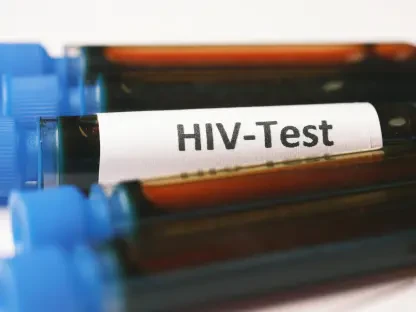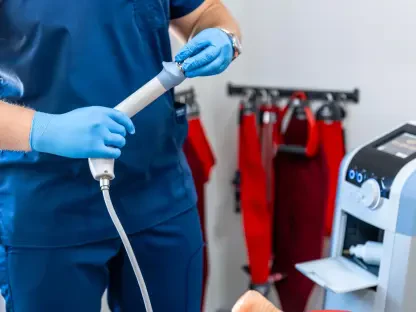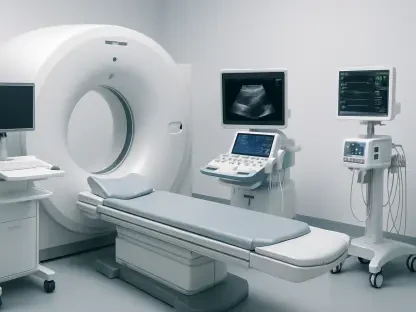In an era marked by increasingly frequent and severe natural disasters, understanding their profound impact on human health has become a pressing global concern. As catastrophic weather events like hurricanes, wildfires, and floods continue to rise, both in their number and intensity, there is an urgent call for comprehensive studies detailing the immediate and long-term health implications of such phenomena. Responding to this challenge, the National Institutes of Health (NIH) and the U.S. National Science Foundation (NSF) launched a collaborative effort to enhance the strategic collection and analysis of time-sensitive health data post-disaster.
This partnership aims to fill critical gaps in disaster research by prioritizing studies that track health data typically overshadowed by the immediate demands of emergency response. Beyond the firefight of immediate disaster management lies a vital opportunity to understand and mitigate the chronic impacts on health, public safety, and community resilience. The initiative underscores the necessity of pivoting from reactive approaches to proactive strategies, ensuring that health research becomes a key pillar in disaster preparedness and response frameworks.
Advancing Disaster Health Research
At the heart of the NIH and NSF partnership lies a transformative agenda focused on fostering comprehensive research into the health outcomes of extreme weather events. By acknowledging the pressing need for quick-response studies, the collaboration sets a precedent for the systemic examination of both immediate health issues and prolonged effects stemming from disasters. Traditional emergency responses often neglect the nuanced health impacts emerging over time. This innovative approach emphasizes the importance of understanding these dimensions to improve future disaster preparedness measures.
The collaboration has led to the funding of multiple pivotal projects starting in 2023, marking significant progress in the disaster health research domain. These research initiatives are not only broadening the scope of scientific inquiry but also paving the way for a generation of early-stage scientists dedicated to exploring the intricate nexus between natural disasters and public health. The initiative’s commitment to funding emerging researchers is designed to ensure a continuous pipeline of scientific expertise, empowering the academic community to translate findings into actionable insights that bolster disaster readiness and recovery efforts at both local and national levels.
Funded Projects and Technological Support
Integral to the success of this partnership are the efforts of institutions such as the Natural Hazards Center (NHC) at the University of Colorado Boulder and the Natural Hazards Reconnaissance (RAPID) Facility at the University of Washington. The NHC has been instrumental in disseminating funds—exceeding $450,000—towards exploring numerous facets of disaster-related health outcomes. From 2023 to 2025, the center championed projects investigating everything from mental health challenges post-hurricanes to understanding exposure risks from wildfire smoke and flooding.
The role of advanced technology in this venture cannot be overstated. The RAPID facility underpins these research endeavors with cutting-edge tools like drones and specialized cameras, enabling precise and timely environmental assessments. By deploying sophisticated technology, researchers are equipped to conduct in-depth investigations into real-time environmental exposures during disasters. Such tools are particularly pivotal for understanding phenomena like wildfire smoke in urban environments, which have far-reaching implications for air quality and public health. This seamless integration of technology facilitates immediate data capture, which is crucial for validating research findings and formulating effective health interventions.
Bridging Research and Practice
The NIH-NSF collaboration exemplifies a forward-thinking approach that bridges the conventional divide between immediate disaster response and long-term health research. By aligning health data collection with disaster response timelines, this initiative offers insights that are crucial for shaping resilient healthcare systems. The efforts to support innovative inquiries into the health impacts of disasters are not only insightful but also essential for developing dynamic response strategies that prioritize human health alongside infrastructural recovery.
This initiative also aspires to serve as a model for integrating health analyses into standard disaster management protocols. By encouraging active dialogue between scientists, policymakers, and emergency response teams, the collaboration highlights the importance of interdisciplinary connections in comprehensively tackling disaster-related health challenges. The insights gathered from these studies are set to inform not just policy formulations but also community-level interventions that are attuned to specific demographic and environmental contexts, thereby optimizing outcomes and reducing health vulnerabilities.
A Step Toward Resilience
In this era of frequent and severe natural disasters, understanding their deep impact on human health is a pressing global issue. As catastrophic events like hurricanes, wildfires, and floods grow in both number and intensity, there’s an urgent need for comprehensive studies to detail both the immediate and long-term health consequences. In response, the NIH and the U.S. NSF have teamed up to improve how time-sensitive health data are collected and analyzed after a disaster strikes.
This collaboration aims to address critical gaps in disaster-related research by emphasizing studies on health data that are often neglected due to the immediate focus on emergency response. Beyond immediate disaster management lies a crucial chance to understand and lessen chronic impacts on health, public safety, and community resilience. The initiative highlights the need to shift from reactive responses to proactive strategies, ensuring health research becomes a key component in disaster preparedness and response plans.









